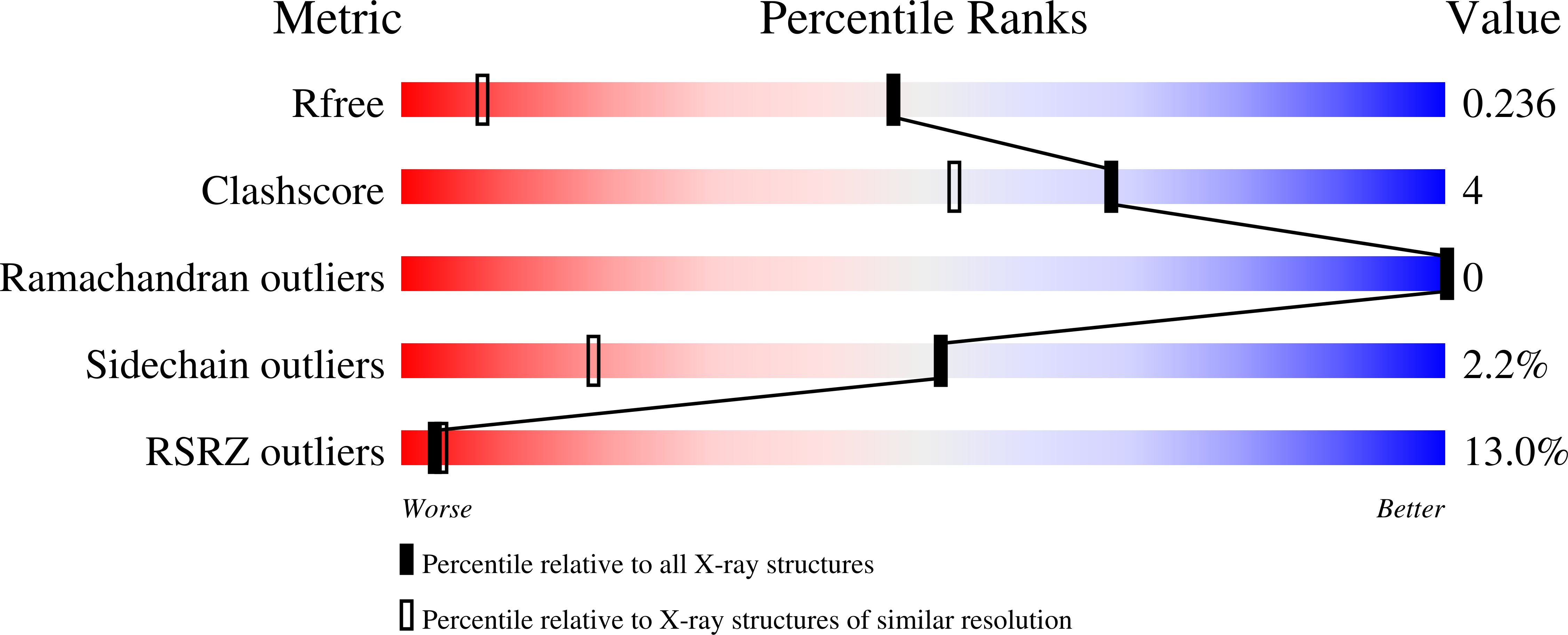High resolution structures of the bone morphogenetic protein type II receptor in two crystal forms: Implications for ligand binding
Mace, P.D., Cutfield, J.F., Cutfield, S.M.(2006) Biochem Biophys Res Commun 351: 831-838
- PubMed: 17094948
- DOI: https://doi.org/10.1016/j.bbrc.2006.10.109
- Primary Citation of Related Structures:
2HLQ, 2HLR - PubMed Abstract:
BMPRII is a type II TGF-beta serine threonine kinase receptor which is integral to the bone morphogenetic protein (BMP) signalling pathway. It is known to bind BMP and growth differentiation factor (GDF) ligands, and has overlapping ligand specificity with the activin type II receptor, ActRII. In contrast to activin and TGF-beta type ligands, BMPs bind to type II receptors with lower affinity than type I receptors. Crystals of the BMPRII ectodomain were grown in two different forms, both of which diffracted to high resolution. The tetragonal form exhibited some disorder, whereas the entire polypeptide was seen in the orthorhombic form. The two structures retain the basic three-finger toxin fold of other TGF-beta receptor ectodomains, and share the main hydrophobic patch used by ActRII to bind various ligands. However, they present different conformations of the A-loop at the periphery of the proposed ligand-binding interface, in conjunction with rearrangement of a disulfide bridge within the loop. This particular disulfide (Cys94-Cys117) is only present in BMPRII and activin receptors, suggesting that it is important for their likely shared mode of binding. Evidence is presented that the two crystal forms represent ligand-bound and free conformations of BMPRII. Comparison with the solved structure of ActRII bound to BMP2 suggests that His87, unique amongst TGF-beta receptors, may play a key role in ligand recognition.
Organizational Affiliation:
Department of Biochemistry, Otago School of Medical Sciences, University of Otago, P.O. Box 56, Dunedin 9001, New Zealand.














